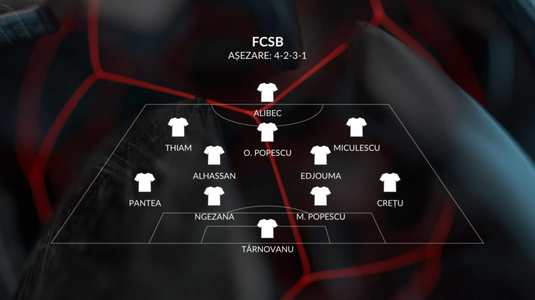
FCSB se va duela cu Young Boys Berna în al doilea meci din faza principală Europa League. Meciul este programat în această seară, de la 19:45.
Roş-albaştrii au moral bună după ce s-au impus cu 1-0 pe terenul celor de la Go Ahead Eagles, şi ocupă locul 9, la egalitate de puncte şi cu golaveraj identic cu Genk, Lyon, Porto, Aston Villa şi Braga.
- Aplicaţia Orange Sport este gratuită şi poate fi descărcată din Google Play şi App Store.
Kiki, OUT de la FCSB! Gigi Becali anunţă schimbările înaintea partidei cu Young Boys
- Vrei să vezi cele mai tari competiții sportive, oriunde ai fi? Ia-ți oferta Orange Love pentru fibră și TV.
“Va juca Pantea în stânga şi Creţu în dreapta. Creţu nu avea mari probleme; a fost întrebat dacă poate, el a zis că da, şi atunci trebuia să ne apărăm acolo, în stânga. Kiki e ceva… abia aştept să vină iarna, să-l scot din lot. (n.r. Kiki mai are contract.) Ce treabă are? Îi dăm banii omului. Nu mai ţin un loc ocupat acolo.
(Despre Edjouma: rămâne sau pleacă?) Păi urmează meciul, ne interesează Edjouma — asta e problema noastră acum? Chiar nu am chef să vorbesc acum.
(n.r. Cu Politic ce este?) Politic va intra şi el diseară, o să vezi. (n.r. În seara asta nu vor juca Şut, Radunovic, Olaru, Bîrligea, Cisotti.) Toţi cinci vor intra. Patru jucători vor intra mai devreme, iar în minutul 70 va intra Şut.
Toţi cei din faţă — acei patru, adică cei trei plus atacantul — vor fi schimbaţi. O să joace toţi cam o repriză, sau depinde: dacă joacă foarte bine Alibec sau Thiam, îi mai ţin.
Miculescu nu contează, oricât de bun ar fi, îl schimb la pauză, joacă Cisotti. Politic intră în locul lui Thiam, Cisotti în locul lui Miculescu, iar Tănase sau Olaru în locul lui George Popescu”, a spus Gigi Becali, la Prima Sport 1.
ECHIPA DE START FCSB

Leave a Reply